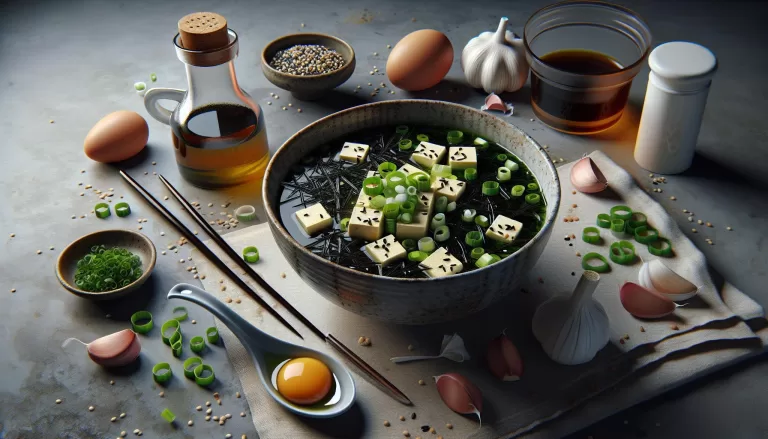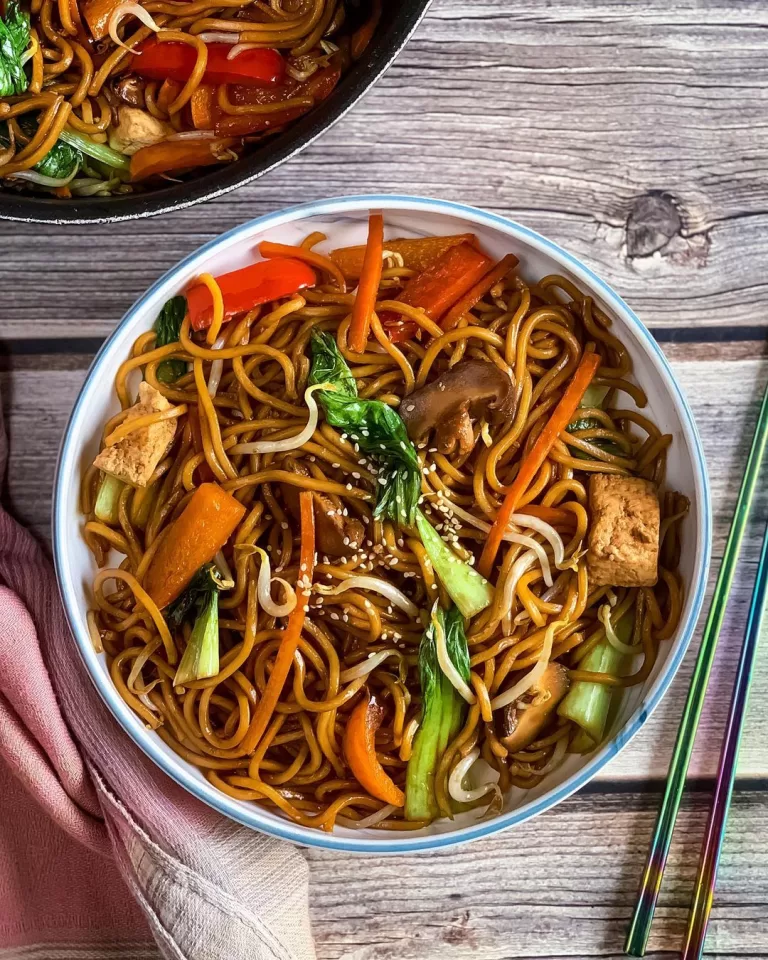Step by Step Guide to Perfect Homemade Dark Soy Sauce Recipe

Benefits of Homemade Dark Soy Sauce
Ever considered the perks of whipping up your own dark soy sauce? It’s tempting and downright purposeful to reach for the store-bought option. But trust us, a homemade dark soy sauce propels your dishes to the next level. So, why should you stir up your own concoction at home?
Imagine having absolute control over the flavor and consistency of your sauce. With homemade dark soy sauce you steer the direction. You decide how salty, tangy, or thick it becomes. Forget about added artificial colors, sweeteners, or preservatives. Here, we believe that natural hits the sweet spot!
Furthermore, it’s essential to consider the economic value. Making your own dark soy sauce can save you a significant amount of cash in the long run, particularly if you’re someone who frequently incorporates this sauce into your dishes. Who wouldn’t want to save some money while also creating a superior, healthier product?
| Store-bought Dark Soy Sauce | Homemade Dark Soy Sauce | |
|---|---|---|
| Cost | High | Low |
| Artificial Additives | Yes | No |
| Customizable Flavor | No | Yes |
You’re also extending a lifeline to our planet. Each homemade batch of dark soy sauce reduces disposable plastic bottles that harm our environment. So, it is not just your palate thanking you, but our Earth as well.
It’s not just about taste, savings, or environmental impact. Home cooks often underplay the therapeutic value of making something from scratch. The act of creating a well-crafted batch of dark soy sauce can be incredibly satisfying. It’s a journey of culinary discovery, a moment of escape, a therapeutic session.
Have you caught the homemade dark soy sauce bug yet? It’s infectious, and we’re certain: once you start, you won’t be able to stop! It truly tailors the flavor to your personal liking, saving some money, reducing waste, and even adding a dash of Zen to your kitchen routine.
Key Ingredients You’ll Need

Taking the helm of the homemade dark soy sauce journey, you’ll need a selection of fundamental ingredients. The beauty of this recipe is its simplicity, yet the end-product is deeply satisfying and flavorful.
Soybeans top the list in your pursuit of the perfect homemade dark soy sauce. For our recipe, let’s work with 2 cups of dry soybeans. They’re the foundation of the sauce, contributing to its rich, umami flavor.
Next up, let’s discuss wheat. You’ll need 1 cup of crushed wheat. It gives the dark soy sauce its characteristic thick, syrupy consistency. If wheat isn’t your go-to, you can always substitute barley or even millet as enticing alternatives.
Never underestimate the power of the humble salt in this recipe. For this volume of ingredients, you’ll need around half a cup. Salt is vital in this process as it facilitates fermentation and acts as a natural preservative.
In addition to these, water and a sweetener such as brown sugar or molasses are also essential. Use around 8 cups of water and 1/2 cup of your preferred sweetener. Water ensures the right texture while the sweetener counteracts the salty taste, enriching the overall flavor profile.
Lastly, keep a lid on mold cultures – specifically Aspergillus oryzae, which helps catalyze the fermentation, giving your sauce its distinct taste. You can buy these online or at any Asian grocery store.
Below is your go-to table for all your ingredient needs.
| Ingredient | Quantity |
|---|---|
| Dry Soybeans | 2 cups |
| Crushed Wheat | 1 cup |
| Salt | 0.5 cups |
| Water | 8 cups |
| Sweetener (Brown Sugar/Molasses) | 0.5 cups |
| Mold Cultures (Aspergillus oryzae) | As needed |
Remember, the joy of cooking is in experimenting. Feel free to tweak these quantities or substitute where you see fit. These swaps could introduce you to a new, exciting flavor of homemade dark soy sauce you hadn’t contemplated before! In the next segment, we’ll delve deeper into the process of turning these ingredients into a savory sauce.
Step-by-Step Guide to Making Dark Soy Sauce

Armed with your ingredients, you’re ready to journey into the ancient art of soy sauce making. Remember – the process isn’t onerous, just requires patience.
Preparation
- First, soak soybeans and wheat overnight. This preps it for the next stage and allows the beans to absorb water. Use a 1:1 ratio of soybeans to wheat. Got a cup of soybeans? Match it with a cup of wheat! Love a fermented twist? Try barley or rye instead of wheat.
- Then, roast the soaked wheat in a pan. This step is critical in developing that robust dark hue. You don’t have to char it, a golden brown should do the trick. If you’re more adventurous, go for buckwheat, it’ll give your sauce that earthy nuttiness.
Fermentation
- Mold inoculation comes next. Blend the roasted wheat and soaked soybeans into a coarse mix. Add the Aspergillus oryzae, ensuring it’s evenly distributed. Can’t find Aspergillus? Rhizopus or even yeast should work just fine.
- Last part of the fermentation. Spread the mixture out for the molds to work their magic. This might take anywhere from three days to a week. Just ensure the temperature stays at a comfortable 85°F (approx. 30°C).
- Then, shift to brewing mode. Combine your moldy mixture with saltwater. Generally, use a ratio of 18% salt to mixture. Want a sweeter touch? Swap half the saltwater with a malt-based sweetener.
- Finally, let nature run its course. Allow the mixture to ferment and age under the sun for about six months. This is the secret to the rich umami flavor in soy sauce, don’t skip this part!
This section provides a broad overview of making dark soy sauce, but remember that getting it just right takes practice. Don’t be afraid to experiment a little, changing ratios, and substituting ingredients. You’ll find that perfect flavor profile in no time.
Tips and Tricks for Perfecting Your Recipe

So, you’ve taken a leap into homemade soy sauce. That’s great! You’ve got the basics now, but let’s explore some tips, tricks, and substitutions to help you perfect your recipe. If it’s your first time or even if you’re an old hand at this, these nuggets of wisdom can make the process more rewarding.
First, remember that consistency is key. Make sure you’re following the steps methodically. Measure your ingredients accurately, maintain the temperature in check, and give each step its due time. Your patience will be rewarded in the end!
When you’re just starting, stick to the script and avoid radical changes in rations. Once you’ve mastered the basic process, feel free to experiment a little. For a unique twist, you could try using black beans instead of soy for a deeper flavor, or adding a hint of star anise for a bit of spiciness. Creativity can lead to tasty discoveries.
Monitor your mix as it ferments and ages. Notice the smells, the changes in color. If something seems off, don’t panic. Sometimes, small variations could just be due to different ingredients or ambient conditions.
Remember, this isn’t a race. The aging process requires time and patience. Extend the aging period if you’re looking for a stronger, deeper flavor. Shorten it if you prefer a lighter taste. You’re in control.
Store your product correctly. Equal parts of salt and water form a brine that preserves the soy sauce and allows it to ferment in peace. Always keep your fermenting sauce in a cool place away from direct sunlight.
Finally, do keep an eye on the nutritional aspect of your recipe. Your homemade soy sauce is a healthier alternative to those high in sodium or artificial preservatives found in marketplaces. Here’s a comparison table for you:
| Homemade Soy Sauce | Market Soy Sauce | |
|---|---|---|
| Sodium | Low | High |
| Preservatives | None | May be present |
Armed with these tips and tricks, you’re ready to create your signature homemade dark soy sauce. Enjoy the journey and taste the fruits of your labor.
Different Ways to Use Homemade Dark Soy Sauce

Let’s delve into the many ways you can use your homemade dark soy sauce. This versatile condiment, with its deep umami flavor and rich color, elevates your dishes. With a pot of homemade dark soy sauce in your kitchen, you’ll find cooking a more tasty venture.
Ever thought about Asian marinades? Your homemade dark soy sauce is an ideal ingredient. Use it to marinate meat overnight for grilled dishes. It gives your food a robust flavor not matched by typical marinades.
How about Stir-fry dishes? A dash of your dark soy sauce transforms even the simplest stir-fry into a gourmet delight. Its rich color gives a nice appeal to your dishes. No more dull stir-fries when you’ve got your dark soy sauce handy.
Feeling adventurous? Try your soy sauce with noodle soups. Replace those seasoning packets with a drop or two of your homemade sauce. You’ll never look back. Whether it’s ramen or pho, your dark soy sauce adds an extra layer of taste that commercial sauces can’t beat.
Even with dipping sauces, your homemade dark soy sauce is a game-changer. Use it as a base for your sauces. Now, your favorite snacks and appetizers have new, addictive flavors.
Homemade pickles, anyone? A little splash of your own soy sauce does the trick. Your pickles will have a distinct flavor that no store-bought pickles can offer.
Creating your own soy sauce opens a door to a world of flavors. And while you navigate this tasty path, remember that the journey is as rewarding as the destination. You’ve made something remarkable on your own. Now every meal you cook can have a touch of your personal culinary journey.
Conclusion
You’ve now got the keys to perfecting your homemade dark soy sauce. With patience, the right ingredients, and careful monitoring of fermentation, you’re on your way to crafting a unique flavor profile that can’t be found in store-bought versions. Remember, it’s not just about making soy sauce – it’s about enhancing your meals with a personal touch. Whether you’re whipping up Asian marinades, stir-fries, soups, or even pickles, your homemade dark soy sauce will bring them to life. The journey to creating your own soy sauce is rewarding, and the benefits are many. So why wait? Start your culinary adventure today, and let your homemade dark soy sauce elevate your cooking to new heights.





